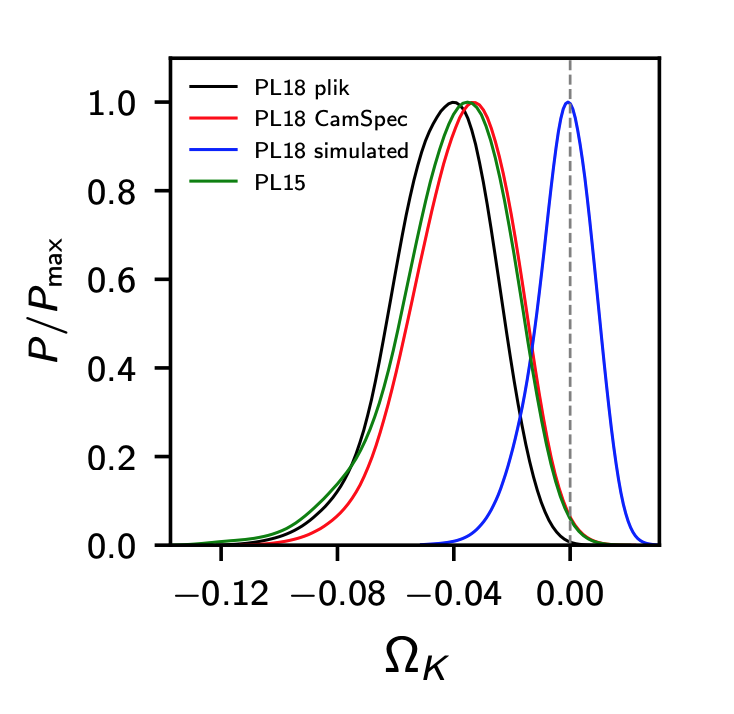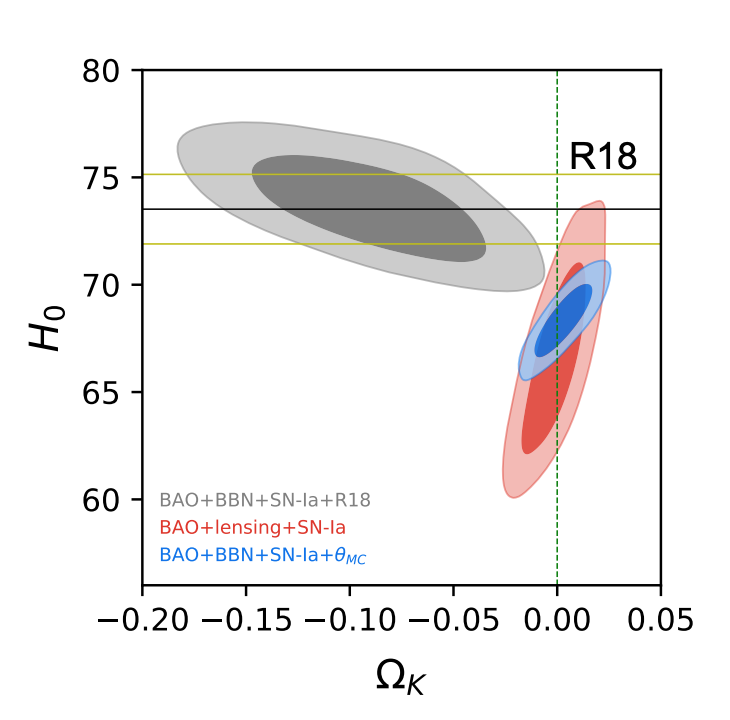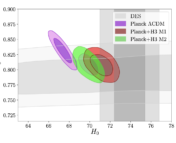Title: Planck evidence for a closed Universe and a possible crisis for cosmology
Authors: Eleonora Di Valentino, Alessandro Melchiorri, Joseph Silk
First author’s institution: Jodrell Bank Center for Astrophysics, University of Manchester
Status: Published in Nature Astronomy [closed access], available on Arxiv
Over the years, astronomers have done a pretty good job at understanding the key parameters that describe our cosmos. The resulting model, known as the Lambda-CDM model, states that the universe must contain dark matter (served cold), some component of dark energy (poured at a constant rate), and a pinch of ordinary matter.
Since our cosmological model agrees with a lot of the data we have, the burden of proof is typically on any new technique or method that finds discrepancies with LCDM.
However, even when two competing observations of the universe assume the same underlying cosmological model, they do not always recover the same result. For example, there is an ongoing disagreement (or “tension”) in the expansion rate of our universe. A slower expansion is favoured by the cosmic microwave background, while nearby supernovae indicate faster expansion. The tension could be the result of some unexplained feature in either dataset, or some cool, interesting new physics. See Astrobites here, here and here for more on this.
A new tension?
In a reanalysis of data taken from the Planck satellite, today’s paper claims that there is a preference for a curved universe over a flat one. The new result states that the curvature parameter, known as Ωκ, is best described by a value of -0.0438, compared to the previously reported result of 0.001 (Planck 2018). For reference, a flat universe requires Ωκ = 0. This states the universe is approximately 4% more curved than we thought. Although this might seem like a small change, a positively curved (or closed) universe introduces statistically significant disagreements with almost every other cosmological probe.
Measuring curvature
The cosmic microwave background (CMB) is the sea of light left over from the Big Bang. This background, although impressively uniform, has small scale properties that inform us about the geometry of the universe and distribution of mass inside it. Astronomers study these properties of the universe by 1) measuring fluctuations in the CMB temperature across the sky and 2) looking at places where the CMB light has been deflected by massive objects. Just as a glass lens can bend light, large gravitational masses can similarly distort the path of the CMB photons. In fact, many of the ground-breaking discoveries in modern cosmology have come from CMB observations, recently earning one of modern cosmology’s key founders, Jim Peebles, the Nobel Prize.
The Planck 2018 data release precisely measured a swathe of cosmological parameters including the total amount of ordinary matter, dark matter and dark energy in our cosmos. However, in one dataset, the Planck team measured an anomalously high distortion of CMB photons (known as the ‘lensing amplitude’). When they combine all their datasets, this anomalously high measurement is not statistically significant. They argue that it is likely the result of a fluctuation in their data.
The authors of today’s paper have re-examined this lensing amplitude as a function of different curvature parameter values. They find that, when applying the value measured from Planck, there emerges a mild preference for a negative value for this parameter (implying positive curvature, according to the sign convention used by the authors). This is shown in Figure 1. They state that a higher lensing amplitude means that CMB photons have been gravitationally deflected more by intervening structures over the course of 13.8 billion years. According to the authors, this makes more sense in a curved universe than a flat one, since the former predicts a higher dark matter content.

Curve your enthusiasm
However, the authors, similar to the Planck 2018 team, say they cannot rule out an “unidentified systematic in their data” that is responsible for this new result.
It is also important to note that the preference for curvature comes from only one dataset. When this result is combined with gravitational lensing data of the CMB, the preference for flatness is restored.
A curvature measurement disagrees strongly with other probes primarily because flatness is a well-motivated property of the universe. The usual explanation of the universe’s early formation is attributed to inflation (the rapid expansion of the universe after the Big Bang). Current models of inflation all naturally produce a flat universe. If the universe is truly curved, theories of inflation would need to change drastically.
The authors suggest that their result requires the consideration of an additional curvature parameter in our current cosmological model. Sadly, this does not resolve existing tensions in cosmology. Instead, it only complicates them—a curved universe throws the current Hubble tension into even more of a frenzy (see Figure 2).

It is important that we continue testing assumptions about the universe, and today’s paper shows that much of our cosmology is held up by precise measurements. Due to the fact there is currently no statistically significant joint measurement of a non-zero curvature parameter value, flat universers can breathe a sigh of relief for now. When future CMB experiments such as the Simons Observatory come online, we will know for sure whether today’s authors were ahead of the curve after all.




